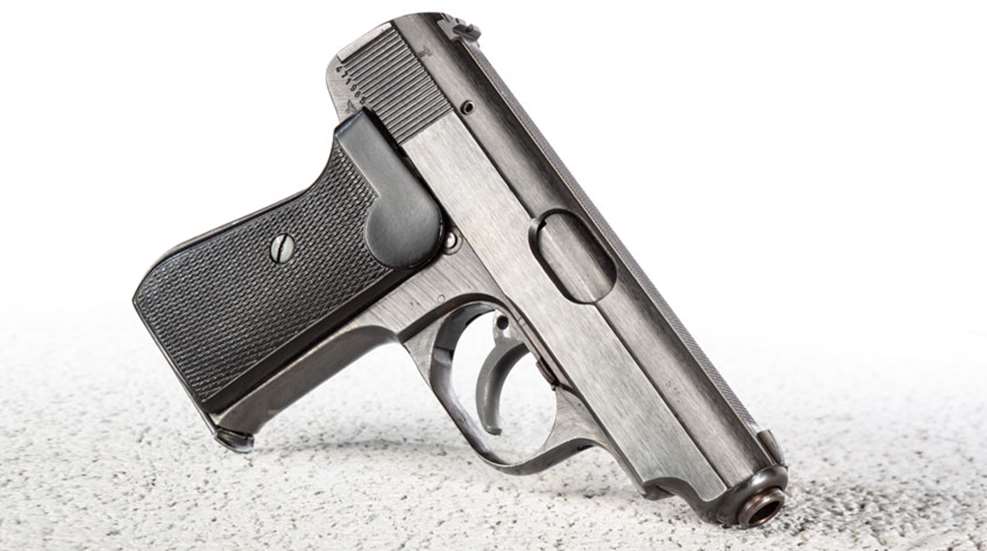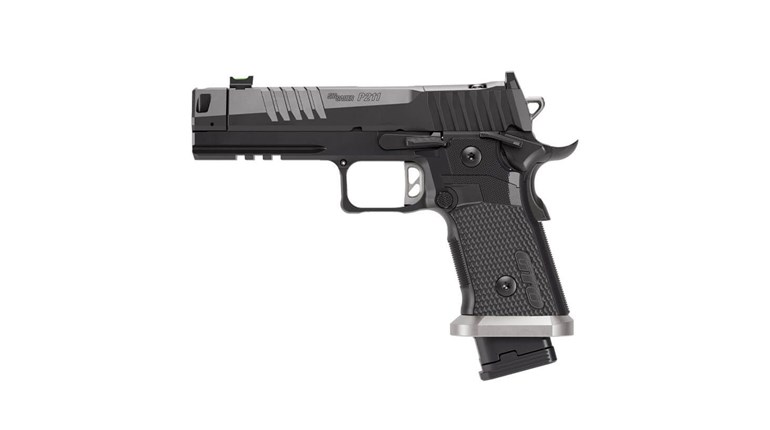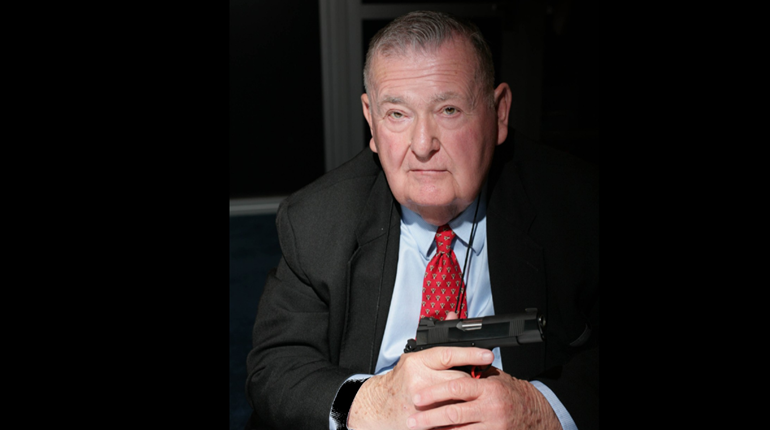
While it may share the aesthetic features of many of the early semi-automatic handguns of the day, mechanically the J.P. Sauer & Sohn 38H had much more going for it.
It would seem that we have reached a plateau of sorts. I refer to the ongoing struggle to develop the ideal service semi-automatic pistol. Trying to unravel the Gordian knot of features offered in the various makes and models—or the necessity for them—is a complex problem. For the time being, almost everyone seems to agree that it’s best to use a trigger system that is safe when it goes untouched and fires with simple index-finger pressure. In the mechanical sense, trigger pressure clears internal safeties, then releases the hammer or striker to fire. OK, we can live with this—a simple, double-action-only (DAO) semi-automatic handgun.
Our new service pistol, to be called the M17 (or M18, an abbreviated version) is manufactured by SIG Sauer, a company that has gone by several names in the past few years. The original company was German and dates to the earliest days of gunmaking in the 20th century. Semi-automatic pistols might have been over-shadowed by the various machine guns, but they got a lot of attention. The earliest ones—Borchardt, Mauser, Luger, etc.—all went with simple single action, where the cocking of the hammer or striker was done by action of the gun’s recoiling mechanism.
Some of these guns, as well as the various Brownings and Browning-influenced designs, had some very good, clean-breaking triggers; others didn’t. The earliest guns to bear the Sauer name had respectable single-action triggers and some models still do, but the firm began to hit its stride when it joined forces with a Swiss company called SIG. The major point to be made is that today’s SIG Sauer pistols are on the leading edge of combat semi-automatic design.
As a matter of fact, you could conclude that SIG Sauer has always been a little bit ahead of trends in pistol design. While there were some early versions of simplified DA trigger systems before World War I, a major, widely distributed DA/SA trigger system did not materialize until Walther introduced its PP pistol in 1929, followed closely by the much-respected PPK in 1932.
Eventually the lockwork of these trend-setting designs found its way into a major service pistol: Germany’s P38. All of these models incorporated a lever on the slide that permitted the shooter to lower a cocked hammer safely. The first shot was a long, dynamic double-action one, followed by multiples (as needed) in single action. It was this kind of system used on almost all of the main participants in the much-analyzed “Wondernine Wars” of the ’70s and ’80s.
J.P. Sauer & Sohn offered a unique, small semi-automatic pistol in 1938. My guess is that this little pistol was designed to out-do those popular Walthers. There was also a racy Mauser pistol drawing a great deal of interest. Sauer’s Model 38H was produced in quantity, but relatively few went to the commercial market. Whatever the company’s motives, the gun was one of the most-advanced designs in the history of personal firearms.
Ostensibly a typical so-called “pocket” auto, the 38H was an all-steel .32-caliber pistol with a single-column magazine, plastic grips and miniscule sights. The trigger pivots from the top of the trigger guard, which is big enough to take a gloved finger. With a recoil spring surrounding the barrel and no breech-locking mechanism, the operation is simple blowback.
It is the trigger system and internal lockwork that stands alone. It is a DA/SA with decocker. It also has an independent, manual safety, rather than a safety worked into the decocking mechanism. Let’s look closer. On the left side of the slide (top rear corner) there is a pivoting lever that constitutes a safety. When flipped up, it blocks both the firing pin and the trigger. That is pretty safe, but the gun also partially relies on the safety inherent in an uncocked hammer.
The 38H has a typical pivoting hammer, but it is internal and has no spur. You cannot thumb-cock the hammer, because it cannot be reached. You cock the hammer to prepare to fire by cycling the slide, like most pistols. But, the designer gave this arm a means of decocking the hammer if that’s what was wanted. At the top front corner of the left grip (right under the right thumb) there is a small pivoting lever.
If the hammer is cocked, the shooter presses this lever and holds it against the pressure of an internal mainspring, then slowly releases that pressure to lower the hammer. But it also works in the opposite direction: If the hammer is not cocked and the shooter needs to make a precise shot at range, he or she presses the lever down to bring that invisible, spurless hammer to full cock.
In this arrangement, first fielded in the late 1930s, a defensive shooter has every possible control he or she might want. There’s a down-to-fire manual thumb safety, a trigger system that works both double and single action and a decocker that can also cock. One respected authority maintains that this slim little gun would have been the most-popular semi-automatic ever, had it not been for almost exclusive use by the German military.
Some may doubt the need for all of these options, and I sort of agree with that. Obviously, they might have been applied to semi-automatics of any size or caliber, but never were. My point is simply that such options were clearly thought-provoking and on the cutting edge of development. Decades later, our military controversially chose another pistol over the excellent P226, a SIG Sauer. Now, we are going to an even more-advanced service pistol, also a SIG Sauer. Progress—it looks like real fightin’ iron.






































